10 Easy-Care Indoor Plants That Are Safe for Cats
Choosing indoor plants that are safe for cats helps protect curious pets from harm.
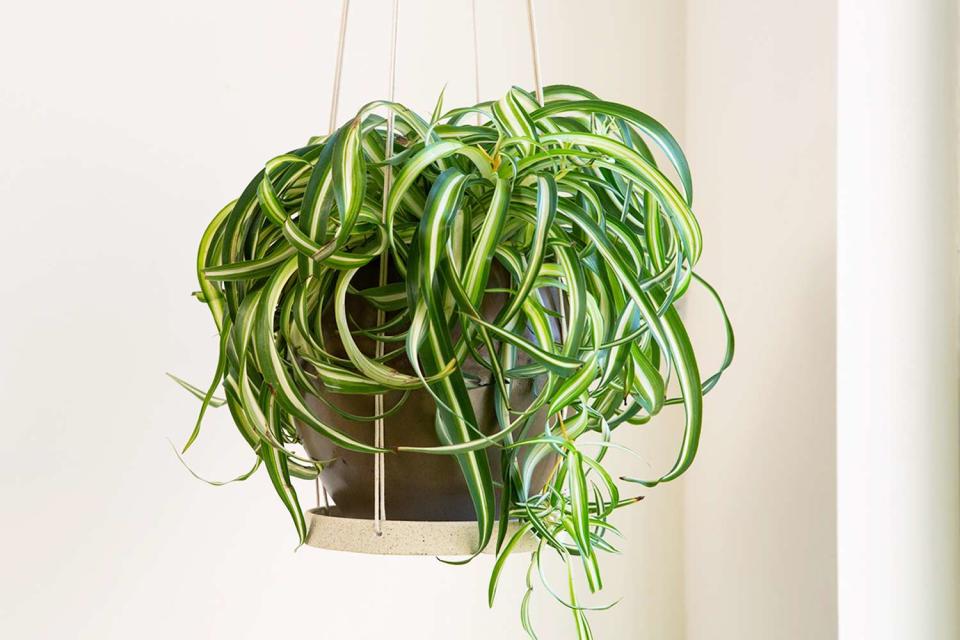
Phoebe Cheong
Cats are curious animals that will often nibble on houseplant leaves when given the chance. Unfortunately, many common plants, including sago palms and lilies, are toxic to cats, and growing these plants in homes with pets is a recipe for disaster. However, plenty of popular, easy-care indoor plants are safe for cats, and you’ll find some of the best non-toxic options listed here.
Most plant labels don’t include information about pet safety, so it’s essential to do some research before bringing any new houseplant into your home. Even if the plants are known to be non-toxic, eating too many leaves can cause gastrointestinal distress and vomiting in your furry companion.
The plants in this guide are all pet-safe, but it’s still a good idea to keep houseplants out of reach of your cats when possible.
Orchids
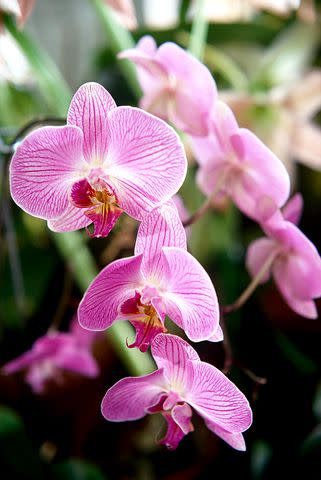
All orchids are pet-safe, but moth orchids are the most common orchids you’ll find at plant nurseries. They’re also some of the easiest orchids to grow, as long as they receive bright, indirect light and moderate humidity. To increase the chances of orchid growing success, repot orchids into well-draining pots with a loose orchid potting mix as soon as you bring your new plants home.
Related: The 13 Best Potting Soils for Indoor and Outdoor Plants
Bromeliad
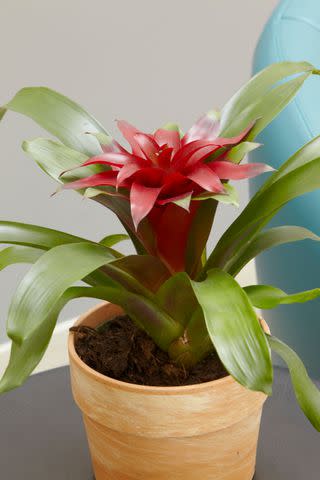
Dean Schoeppner
There are hundreds of bromeliad species, including varieties with striped and patterned leaves and boldly colored flowers. In the wild, most bromeliads grow as epiphytes on trees, but they need a loose potting mix to thrive indoors. Many bromeliads have thick leaves with serrated edges that makes them less appealing for nibbling, but if they do get munched on, bromeliads aren't toxic to cats.
Air Plants
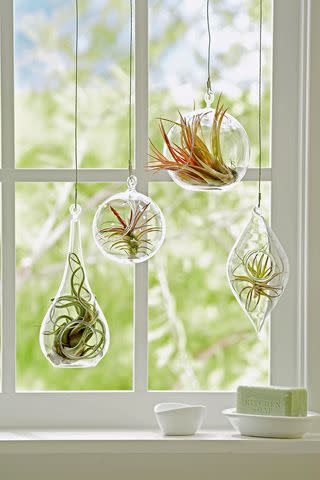
Air plants are closely related to bromeliads, so it’s no surprise they found their way onto this list of cat-safe plants. There are over 650 different species of air plants, ranging from tiny, 1-inch-tall plants to larger specimens like Tillandsia xerographica. Most air plants don’t need any soil to grow, and they can be kept in hanging glass terrariums or mounted to a piece of driftwood for a natural look.
Haworthia
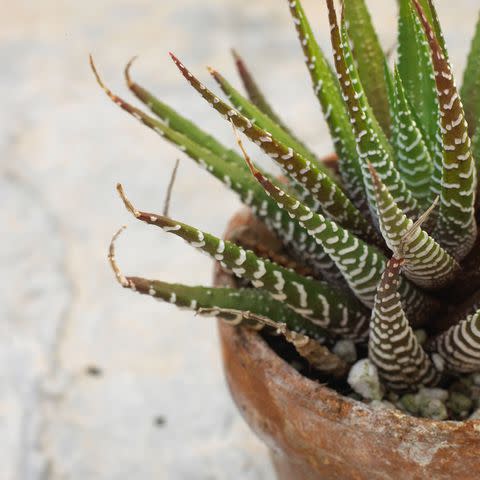
Some succulent species are toxic to cats, including aloes, the African milk tree, and most other Euphorbia plants, but haworthias are non-toxic and have a strong and intriguing silhouette. Like other succulents, haworthias don’t need much water and should be kept in well-draining pots with a potting mix intended for cacti and succulents. For best results, grow haworthia in an east- or west-facing window where plants receive bright, indirect light for most of the day.
Related: The 5 Best Soil for Succulents of 2024
Christmas Cactus
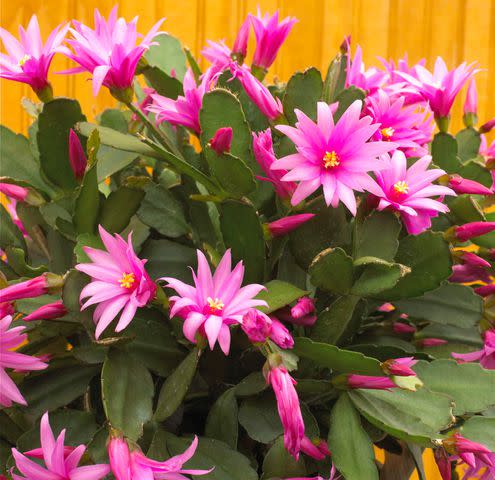
With fleshy, segmented leaves and bright, tropical-looking flowers, Christmas cacti have much to offer. Not only are these succulents safe for cats, but they also don’t need much water or fertilizer, and they’re super easy to propagate. Plus, Christmas cacti bloom in midwinter, just in time for the holidays.
Boston Fern
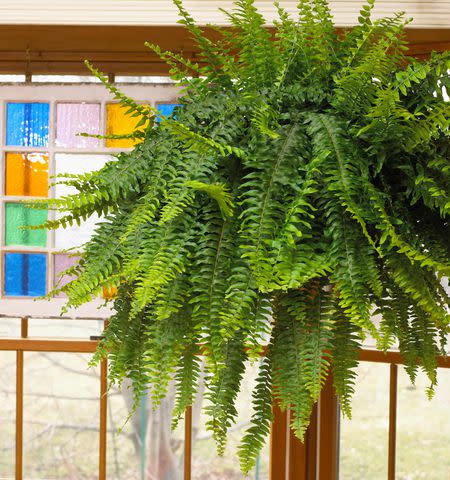
Many types of ferns are safe for cats, but the Boston fern is one of the easiest ferns to grow indoors. Like most other ferns, Boston ferns crave extra humidity and can start to brown and drop leaves in dry homes. To avoid this, water your plant often and place it near a humidifier or in a steamy, brightly lit bathroom where humidity levels are naturally high.
Related: The 10 Best Humidifiers for Plants of 2024
Ponytail Palm
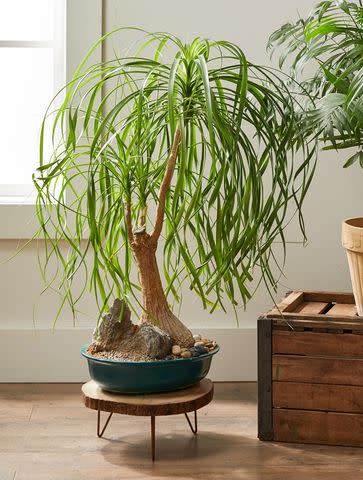
With slender, curling leaves atop a bulbous trunk, ponytail palms look almost cartoonish. Despite their name, ponytail palms aren’t palm trees at all; they’re more closely related to agaves. Because these plants store water in their thick trunks, they only need to be watered about once every two weeks, and their soil should dry out in between waterings to prevent waterlogged roots.
Spider Plant

Phoebe Cheong
Spider plants are well-known for their slender, grass-like leaves and easy-going nature. Provide these plants with bright, indirect light and regular watering, and they’ll reward you with lush, leafy growth and tiny, white flowers. Cats sometimes chew on delicate spider plant leaves, but you can prevent this by keeping your plants in a hanging basket or on an out-of-the-way shelf.
Related: 22 Creative DIY Indoor Hanging Plant Holders
Prayer Plant
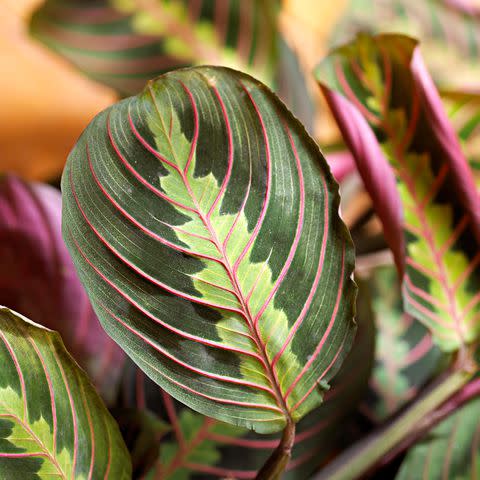
Prayer plants are named for their unique leaves that move with the sunlight and turn upward in the evening as if they’re in prayer. With flashy, patterned foliage and tiny purple flowers, prayer plants add something unexpected to houseplant collections, and they look particularly fetching in hanging baskets. Although prayer plants grow fine at standard indoor humidity levels, these tropical plants love extra humidity, so they grow even better next to a humidifier.
African Violet
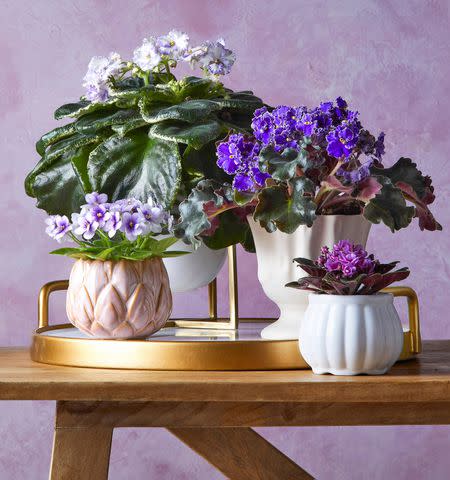
African violets are cat-safe houseplants that can bloom throughout the year. These petite beauties produce dainty flowers in shades of pink, purple, and white, but African violets also feature fuzzy leaves that can be variegated. These plants do best when watered from the bottom, which helps avoid rot.
Tips for Keeping Cats Away from Houseplants
Growing only non-toxic houseplants is the best way to protect cats from harm if your pet chooses to do a taste test. However, if you have a cat that really loves to chew on plant leaves, you may still want to take a few extra precautions to protect your plants from receiving too much “attention” from kitty. Easy ways to deter cats from nibbling on houseplants include:
Place plants in a hard-to-reach location or a hanging basket.
Don’t locate plants near your kitty’s favorite resting spot.
Use vet-approved deterrent sprays.
Distract cats with their very own catnip plant or cat grass.
Related: 15 Non-Toxic Plants for Dogs and Cats for Greenery Without Worry
For more Better Homes & Gardens news, make sure to sign up for our newsletter!
Read the original article on Better Homes & Gardens.

